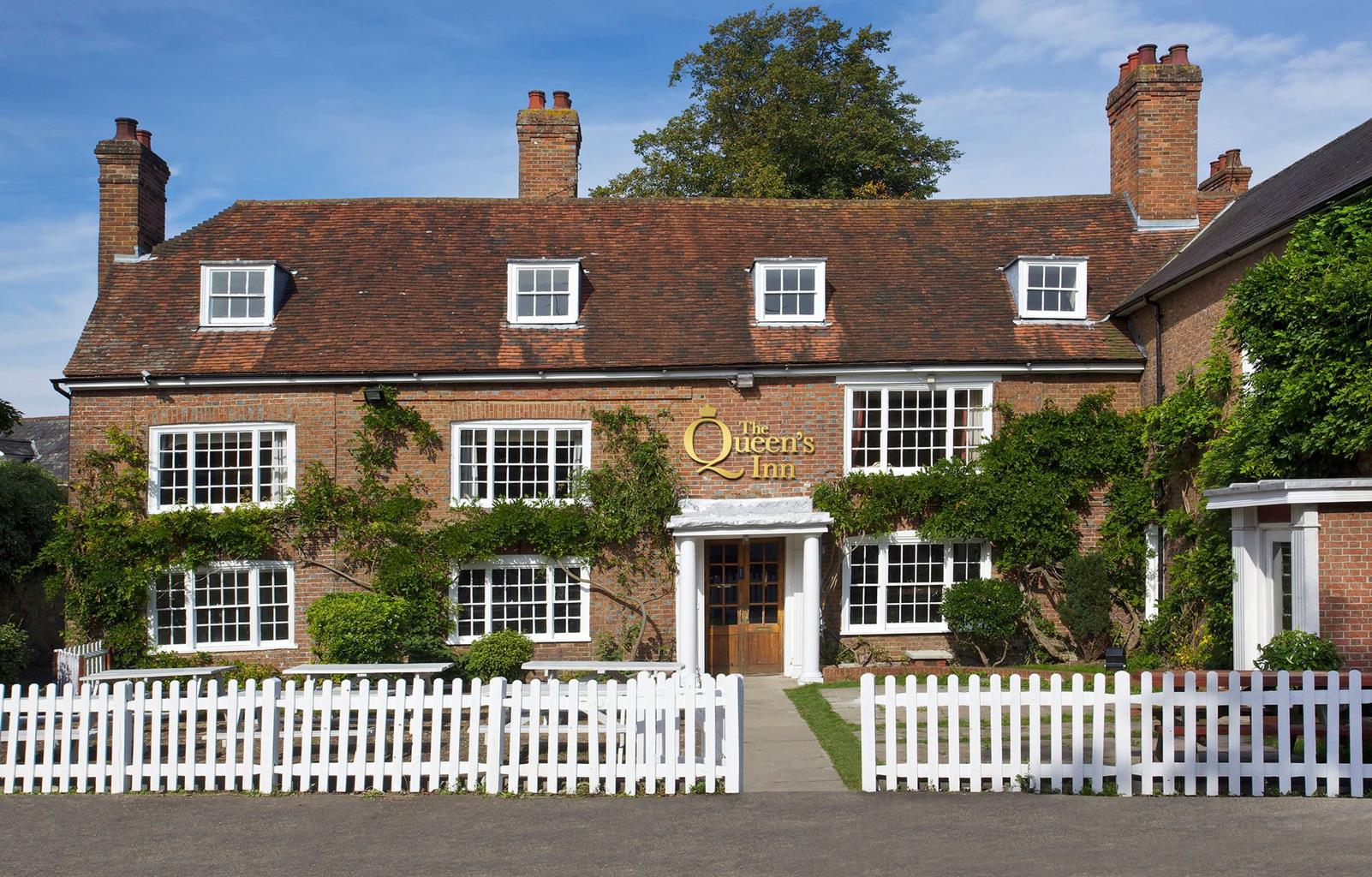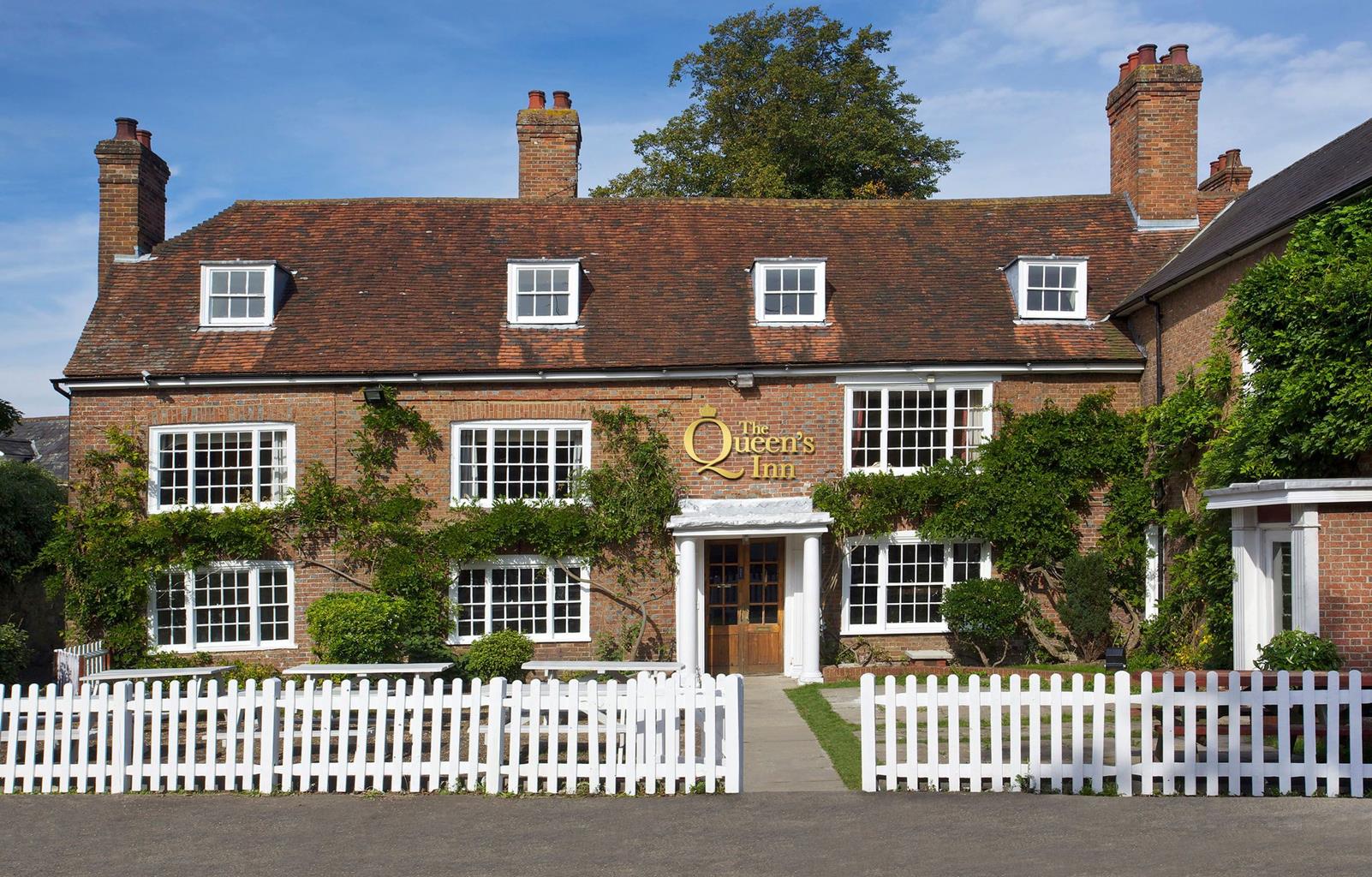Carefully brought back to life after years of decline, The Queen's Inn offers individually…
Benenden – village and school

6 miles (9.9kms)
About the walk
'Lucy Locket lost her pocket
Kitty Fisher found it,
Not a penny was there in it
But a ribbon round it.'
They might have been immortalised in a nursery rhyme, but Lucy Locket and Kitty Fisher were certainly not the innocent young girls that we tend to imagine. Quite the opposite – they were a couple of celebrated 18th-century courtesans who worked their way into high society.
Kitty, whose real name was Catherine Maria, worked as a milliner but her more exotic exploits brought her to the attention of a wider public. Casanova made a point of meeting her when he came to London and she even had her portrait painted by Sir Joshua Reynolds – today it is on display at Petworth House. Kitty inspired many songs and verses: a country dance was named after her, and her namesake appears in The Beggar's Opera (1728).
The nursery rhyme we know today – there are several versions of it – was sung in both England and America, usually to the tune of Yankee Doodle Dandy. Kitty was such a skilled social climber that in 1766 she married John Norris, the grandson of the Admiral of the Fleet, who brought her to live at Hemsted, the fine manor house at Benenden. Such a marriage would have represented a real achievement for a working class girl and would have given her wealth, security and respectability. Kitty quickly settled into her new role as lady of the manor. She was very popular locally and generous to the poor people of the village. Unfortunately, she died of smallpox just four months after her marriage.
Hemsted was visited by Elizabeth I in 1573, when she stayed there as a guest of Sir Thomas Guldeford. She planted a walnut tree in the grounds but sadly the tree is no longer there as it fell down in the 19th century. The house you see today is very imposing and looks Jacobean with its tall chimneys and stone-framed windows. However, it dates back to only 1860, when the original Hemsted was rebuilt. In 1924 the house came to the attention of some teachers looking for a suitable location for a boarding school and today Hemsted houses Benenden School, one of the most exclusive girls' schools in the country.
Walk directions
From the church turn left, follow the footpath through a gate and go over the stile. The route now continues over four more stiles as you cross the fields and the road to join a grassy track. Go through the white gate at the bottom, then cross a footbridge and go through another gate into a field.
You're now following the course of an old Roman road. Walk up the left of the field, climb the stile at the top and continue through another field, keeping ahead at some waysigns. It's tranquil here with rolling pasture and mature trees. Pass a pond, then cross the stile in the hedgerow. Walk towards the houses and go through a gate in the top left-hand corner of the field. Turn right and continue until you reach the main road.
Turn right, cross by the sign for Benenden School and follow the tarmac road. Turn left, head along the bottom of the playing fields, go through a gate and then follow the fence line on your left. Don't go through the gate in front of you, instead turn right and walk towards the school. Keeping the school on your left, continue to the drive to the right of a house.
Cross the driveway and follow the waymarker posts across the grass and then right along the drive between newer school buildings, passing Founders building on your right. Keep to the drive as it leaves the school and swings right to reach the road.
Cross over into Goddard's Green Road and follow the road (can be busy) to the entrance to Hemsted Forest. Turn left here, keep left of the car park and follow the wide track into the wood. At the first crossing of tracks, turn right (you will see a 'No Riding' sign) along the waymarked path, keeping left at a fork, heading downhill through the woodland fringe to eventually enter an orchard.Turn left to reach the road. Turn left, take the footpath on the right and just before Goddard Cottage cross the stile on the left and keep left to enter a field. Keep ahead along the left-hand edge to a gate, then bear diagonally right across the field to pass through a small copse to a stile. Turn right across a field to a gate. Walk beside woodland, go through a gate and drop down through the wood to reach a fork of paths after crossing a bridge over a stream. Take the right-hand path uphill, exit the trees and keep to the left-hand edge of an orchard to a stile. Keep ahead across the field to a gate and track.
Turn right and follow the track beside woodland, then, where it bears sharp right, veer off left downhill and soon bear right into woodland. Remain on this track through the trees, eventually reaching a road below a cottage. Follow this country lane for 0.5 miles (800m) back into Benenden.
Additional information
Grassy tracks, woodland paths and field margins, many stiles
Lush open fields, parkland and an imposing old school
On lead across farmland and on country lanes
OS Explorer 125 Romney Marsh, Rye & Winchelsea
Village hall car park or by village green in Benenden
At car park
WALKING IN SAFETY
Read our tips to look after yourself and the environment when following this walk.
Find out more
Also in the area
About the area
Discover Kent
The White Cliffs of Dover are an English icon – the epitome of our island heritage and sense of nationhood. They also mark the point where the Kent Downs AONB, that great arc of chalk downland stretching from the Surrey Hills and sometimes known as ‘the Garden of England’, finally reaches the sea. This is a well-ordered and settled landscape, where chalk and greensand escarpments look down into the wooded Weald to the south.
Many historic parklands, including Knole Park and Sir Winston Churchill’s red-brick former home at Chartwell, are also worth visiting. Attractive settlements such as Charing, site of Archbishop Cranmer’s Tudor palace, and Chilham, with its magnificent half-timbered buildings and 17th-century castle built on a Norman site, can be found on the Pilgrim’s Way, the traditional route for Canterbury-bound pilgrims in the Middle Ages.
In the nature reserves, such as the traditionally coppiced woodlands of Denge Wood and Earley Wood, and the ancient fine chalk woodland of Yockletts Bank high on the North Downs near Ashford, it is still possible to experience the atmosphere of wilderness that must have been felt by the earliest travellers along this ancient ridgeway.
Nearby stays
Restaurants and Pubs
Nearby experiences
Recommended things to do
Why choose Rated Trips?
Your trusted guide to rated places across the UK
The best coverage
Discover more than 15,000 professionally rated places to stay, eat and visit from across the UK and Ireland.
Quality assured
Choose a place to stay safe in the knowledge that it has been expertly assessed by trained assessors.
Plan your next trip
Search by location or the type of place you're visiting to find your next ideal holiday experience.
Travel inspiration
Read our articles, city guides and recommended things to do for inspiration. We're here to help you explore the UK.













